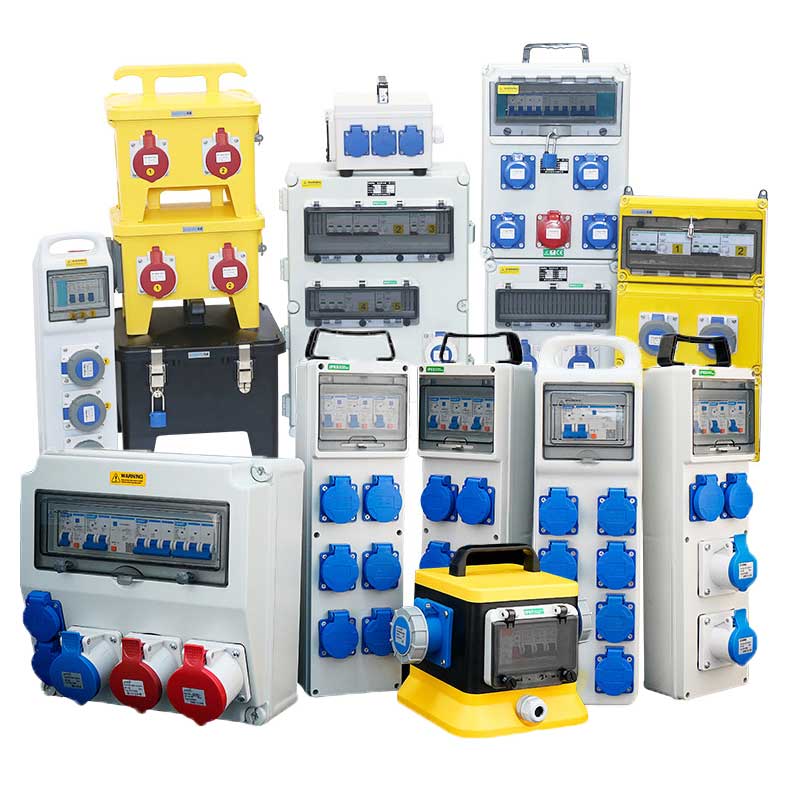
Junction Box, Joint Box, and Distribution Box: A Comparison
In electrical systems, there are various types of enclosures used to protect and organize electrical connections. Three of the most common types are Junction Boxes, Joint Boxes, and Distribution Boxes. Although they may seem similar, they each serve distinct purposes and are used in different applications.
≡ Junction Box
.webp)
A Junction Box is an enclosure designed to house and protect electrical connections. It is typically used when multiple cables or wires need to be joined, protected, and insulated. Junction boxes are widely used in both residential and commercial settings, providing a safe environment for electrical connections.
- Function: Protects and connects multiple cables or wires, providing a secure junction.
- Boyut: Larger, suitable for complex wiring systems with multiple connections.
- Uygulamalar: Industrial, commercial, and residential electrical systems, control panels, outdoor installations.
- Protection Rating: Commonly IP65, IP66, or higher, offering protection against dust and water jets.
- Installation Environment: Suitable for both indoor and outdoor installations in industrial or commercial environments.
- Primary Purpose: To protect and connect a large number of cables in complex wiring setups.
≡ Joint Box

A Joint Box is a smaller, more compact enclosure primarily used to house and protect electrical cable splices or joints. It is commonly used in smaller-scale applications where only a few cables are being joined, such as during repairs or basic electrical connections.
- Function: Houses small electrical cable junctions, typically used for splicing or repairs.
- Boyut: Smaller, used for fewer cables or simple splicing tasks.
- Uygulamalar: Residential, small-scale commercial tasks, cable splicing, or repairs.
- Protection Rating: Typically IP65 or lower, provides basic protection against dust and water jets.
- Installation Environment: Best for indoor use or sheltered outdoor environments with limited exposure to harsh elements.
- Primary Purpose: To provide protection for simple electrical connections or splices.
≡ Distribution Box
A Distribution Box (also known as a Distribution Board) is designed to distribute electrical power from a central source to multiple circuits. These boxes house circuit breakers, fuses, and other components needed for safe and efficient power distribution in larger electrical systems. Distribution boxes are commonly used in commercial, industrial, and residential buildings.

- Function: Manages and distributes electrical power from the main source to various circuits.
- Boyut: Larger, to accommodate circuit breakers, fuses, and wiring distribution components.
- Uygulamalar: Residential, commercial, and industrial buildings requiring safe and organized power distribution.
- Protection Rating: Typically IP65 or higher, ensures internal components are protected from environmental factors like dust and water.
- Installation Environment: Installed in power distribution areas, control rooms, and electrical panels, suitable for indoor and outdoor environments.
- Primary Purpose: To distribute electrical power safely and efficiently to multiple circuits and appliances.
Comparison Table
| Özellik | Junction Box | Joint Box | Distribution Box |
|---|---|---|---|
| Function | Protects and connects multiple cables or wires, providing a secure junction. | Houses small electrical cable junctions, typically used for splicing or repairs. | Manages and distributes electrical power from the main source to various circuits. |
| Boyut | Larger, suitable for complex wiring systems with multiple connections. | Smaller, used for fewer cables or simple splicing tasks. | Larger, to accommodate circuit breakers, fuses, and wiring distribution components. |
| Applications | Industrial, commercial, and residential electrical systems, control panels, outdoor installations. | Residential, small-scale commercial tasks, cable splicing, or repairs. | Residential, commercial, and industrial buildings requiring safe and organized power distribution. |
| Protection Rating | Commonly IP65, IP66, or higher, offering protection against dust and water jets. | Typically IP65 or lower, provides basic protection against dust and water jets. | Typically IP65 or higher, ensures internal components are protected from environmental factors like dust and water. |
| Installation Environment | Suitable for both indoor and outdoor installations in industrial or commercial environments. | Best for indoor use or sheltered outdoor environments with limited exposure to harsh elements. | Installed in power distribution areas, control rooms, and electrical panels, suitable for indoor and outdoor environments. |
| Primary Purpose | To protect and connect a large number of cables in complex wiring setups. | To provide protection for simple electrical connections or splices. | To distribute electrical power safely and efficiently to multiple circuits and appliances. |
Conclusion
While Junction Boxes, Joint Boxes, and Distribution Boxes all serve as essential components in electrical systems, they each have different purposes and are suited to specific applications. Junction boxes are ideal for complex wiring, joint boxes are designed for smaller, simpler splicing tasks, and distribution boxes are key for managing electrical power distribution to various circuits. Understanding the differences between these boxes can help ensure that the right type is used for the right application, maximizing safety and efficiency in your electrical installations.


